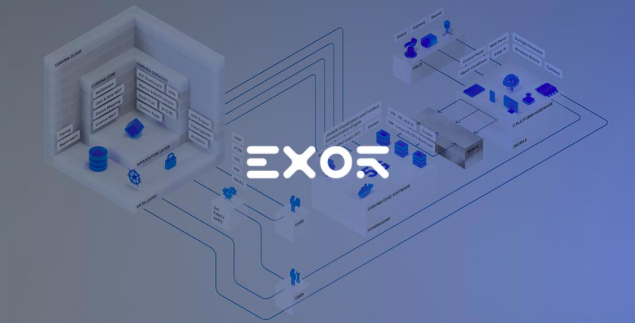Industrie 4.0 introduced the concept of automating industrial workflows to reduce errors, increase shop-floor safety, and increase productivity. The concept behind automating these workflows rests on developing a framework of digital industrial solutions with the ability to drive interconnectivity, capture data, and analyze the captured data to empower automated systems with machine vision or machine-learning capabilities. Integrating the use of a digital platform provides the enabling environment that digital technologies require for delivering the benefits of Industrie 4.0.
What are digital-platform frameworks?
The traditional concept of digital platforms refers to the interfaces such as Facebook, Twitter, and Instagram that dominate the social-media space. However, in the industrial sector digital platforms refer to service-oriented platforms that support communication, data collection, and analysis within a facility. These digital platforms become the framework for managing an industrial enterprise’s IT and interrelated OT infrastructure.
Digital platforms leverage a centralized computing resource framework – the cloud or on-premises infrastructure – to host applications and app development tools. These applications and tools such as APIs or machine-utilization apps can either be generic to every industry or industry-specific applications. For example, using a digital platform built to support manufacturing digitalization gives manufacturers the tools to develop very technical apps from scratch that wouldn’t be found in the average Play Store or iTunes Store.
Focusing on the manufacturing industry, the image below highlights the industry-specific nature of a digital-platform framework that supports industrial use cases.
Figure 1. Digital-Platform Framework
The framework provides extensive support for the edge, near-edge, smart, and automated systems deployed within the shop floor. The framework showcases the storage and computing assets needed to power a digital platform, the data-producing devices, and the apps for collecting and analyzing captured data. The insight and data captured within the framework are accessed using the web and mobile apps, as can be seen from Figure 1. The capabilities of the average digital platform can be categorized as offering the following:
- Access control – This capability defines the endpoints that can gain access to platform data and networks. Access-control management is responsible for securing an enterprise’s IT framework through verification and permission tools.
- Event processing – Identifying and processing important events occurring within a digital platform helps with real-time decision-making. A platform with event-processing capabilities enables users to automate specific tasks such as inspections and monitoring actions.
- External-integration support – Generally, digital-platform frameworks function alongside standalone applications or systems such as ERP software. A digital platform must support the integration of external systems that are crucial to industrial operations.
Leveraging digital platforms to implement Industrie 4.0
With approximately 81% of manufacturing enterprises adopting increasingly advanced digital-transformation solutions, providing answers to the question “Why go the digital route?” is no longer valid. Today, everyone understands the productivity and operational benefits that come with embracing digital transformation. A digital-platform framework brings all digitalization tools used within a singular virtual environment. Thus, a manufacturer gets a singular environment for managing every digital and physical asset deployed within the shop floor from a single platform.
Familiarity with the base goals of the OPC Foundation and its drive to unify both IT and OT assets highlight the importance of a unifying digital framework. Using a centralized digital platform, enterprises can:
- Build and support industry-specific apps – Manufacturers can leverage digitized frameworks and the tools within them to create unique apps that handle machine data according to defined goals. The framework can also integrate apps such as capacity-planning software that utilize shop-floor data for accurate analysis. Using APIs, the software automates the collection of related shop-floor data to execute the requested analyses.
- Implement remote and condition-monitoring strategies – The centralization of IT resources and digital industrial-solutions support empower manufacturers to test and implement diverse strategies. Examples include leveraging machine data and web-based interfaces or HMIs to remotely monitor asset performance levels or specific shop-floor operations. The interconnectivity a digital platform supports powers the application of monitoring strategies.
- Validation and testing – Reducing failure rates when implementing new technologies or strategies within the shop floor is important to reducing implementation costs. A centralized digital platform provides the tools for assessing the effects of implementations using VR headsets or analytics software to analyze related data sets.
Build or buy digital industrial solutions: digital-platform frameworks
Manufacturers interested in adopting digital platforms to ease manufacturing operations have two choices before them – build your platform from scratch or buy into an existing platform. Making the right decision involves understanding some important factors. These considerations include:
- Building cost – The infrastructure required to build a digital platform from scratch are considerable. These costs include hardware purchases such as storage discs capable of supporting big data sets and supporting computers. Other costs involved include housing the infrastructure and paying for the labor incurred when building and configuring a digital platform.
- In-house competency – Building, managing, and maintaining a digital platform is a task that must be executed around the clock. There are no days off. A dedicated staff with the ability to respond to security incidents and downtime triggers is required. For example, the recommended building and management process involves adopting the CICD tenets of constant development and continuous integration to safeguard and build a functioning platform. Manufacturers who lack the technical personnel to implement these processes will have to build new IT departments to handle the management process.
- Level of customization – The manufacturing industry is known for its industry-specific applications and platforms. Therefore, instead of IoT, IIoT is the term used within the industrial sector. Deciding to build must account for the need to customize and configure the platform to meet industrial requirements. From the purchasing side, customization must also be considered because a generic digital platform is unlikely to provide the optimization results required from it.
- Time to market – The time to build a functional digital platform ready for utilization is an important consideration for manufacturers interested in competing with their global peers. If the build time for an individual manufacturer is extensive, this means the manufacturer ends up playing catch-up with others already utilizing a digital platform.
- Security – Many manufacturing enterprises which choose to build point at security challenges as the deciding factor behind building their platforms. 75% of enterprises name cloud security as their biggest challenge with purchasing digital solutions, and these concerns are legitimate. Although building your platform provides a measure of security; these platforms must be properly configured because poor configuration accounts for 68% of successful data breaches. The negative effects of misconfiguration once again raise the question of how competent the in-house personnel are at building and managing a digital platform?
Conclusion
The decision to buy or build rests on the shoulders of C-level executives who must consider their industrial enterprise’s key competencies before deciding. The cost and technical requirements for building digital platforms make purchasing a more attractive option for small and medium-sized businesses. However, large businesses that choose to build generally partner with reputable industrial-solutions providers to meet their building requirements.







